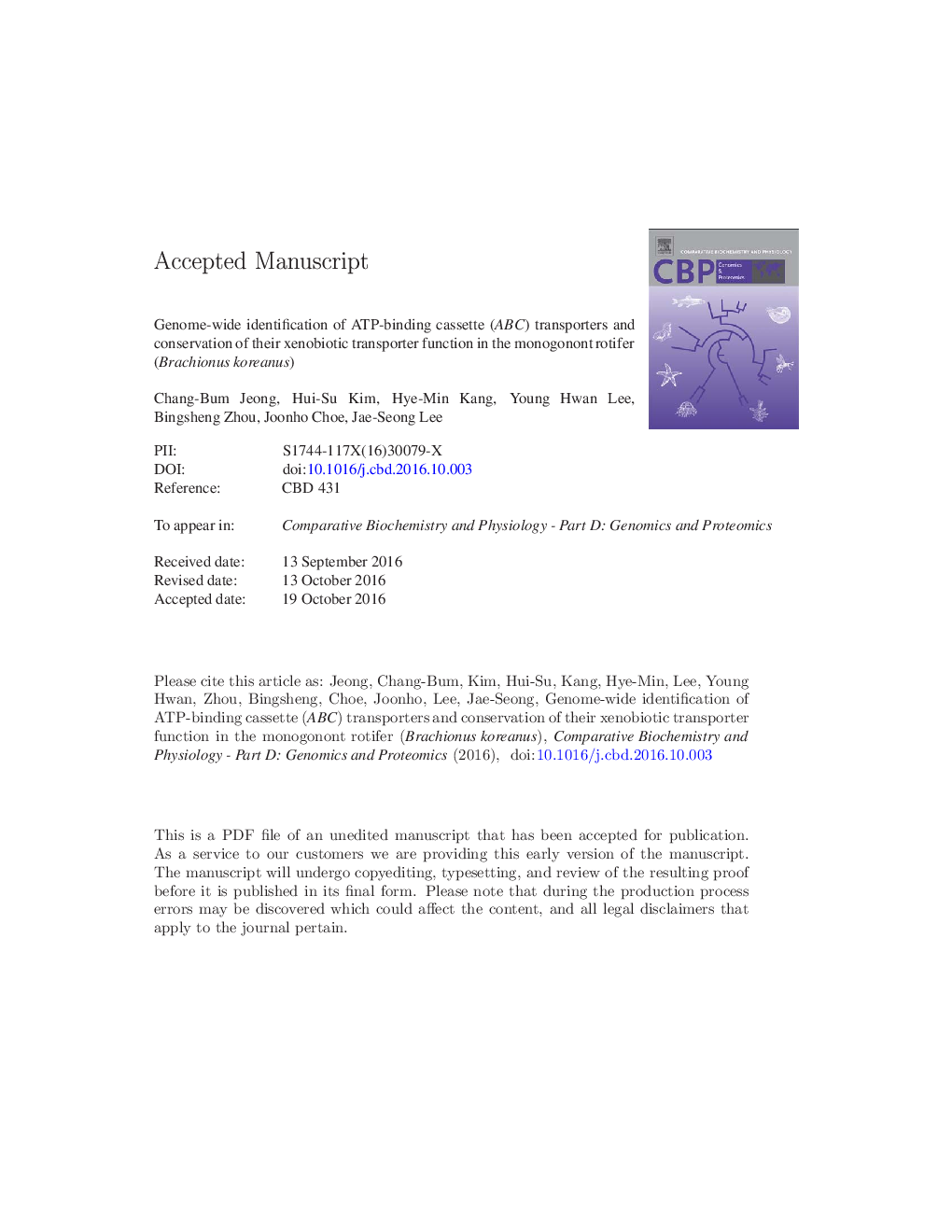| Article ID | Journal | Published Year | Pages | File Type |
|---|---|---|---|---|
| 5510716 | Comparative Biochemistry and Physiology Part D: Genomics and Proteomics | 2017 | 30 Pages |
Abstract
The ATP-binding cassette (ABC) transporter family is one of the largest gene family in animals, and members of this family are known to be involved in various biological processes due to their ability to transport a wide range of substrates across membranes using ATP cleavage-derived energy. We identified 61 ABC transporters in the genome of the monogonont rotifer Brachionus koreanus, and classified these into eight distinct subfamilies (A-H) by phylogenetic analysis. ABC transporters in the rotifer B. koreanus are comprised of 11 ABCA genes, 19 ABCB genes, 14 ABCC genes, 3 ABCD genes, 1 ABCE gene, 3 ABCF genes, 8 ABCG genes, and 2 ABCH genes. Extensive gene duplication and loss events in synteny were observed in several subfamilies. In particular, massive gene duplications of P-glycoproteins (P-gps), multidrug resistance proteins (MRPs), and Bk-Abcg-like proteins were observed. The ability of these B. koreanus proteins to function as multixenobiotic resistance (MXR) ABC transporters was validated using specific fluorescence substrates/inhibitors. The ABC transporter superfamily members identified in this study will be useful in future toxicological studies, and will facilitate comparative studies of the evolution of the ABC transporter superfamily in invertebrates.
Related Topics
Life Sciences
Biochemistry, Genetics and Molecular Biology
Biochemistry
Authors
Chang-Bum Jeong, Hui-Su Kim, Hye-Min Kang, Young Hwan Lee, Bingsheng Zhou, Joonho Choe, Jae-Seong Lee,
